There is nothing sweeter than a juicy summer peach! Here is everything you need to know about safely serving peaches and nectarines to babies using a baby led weaning approach, including how to cut peaches for babies of all ages.
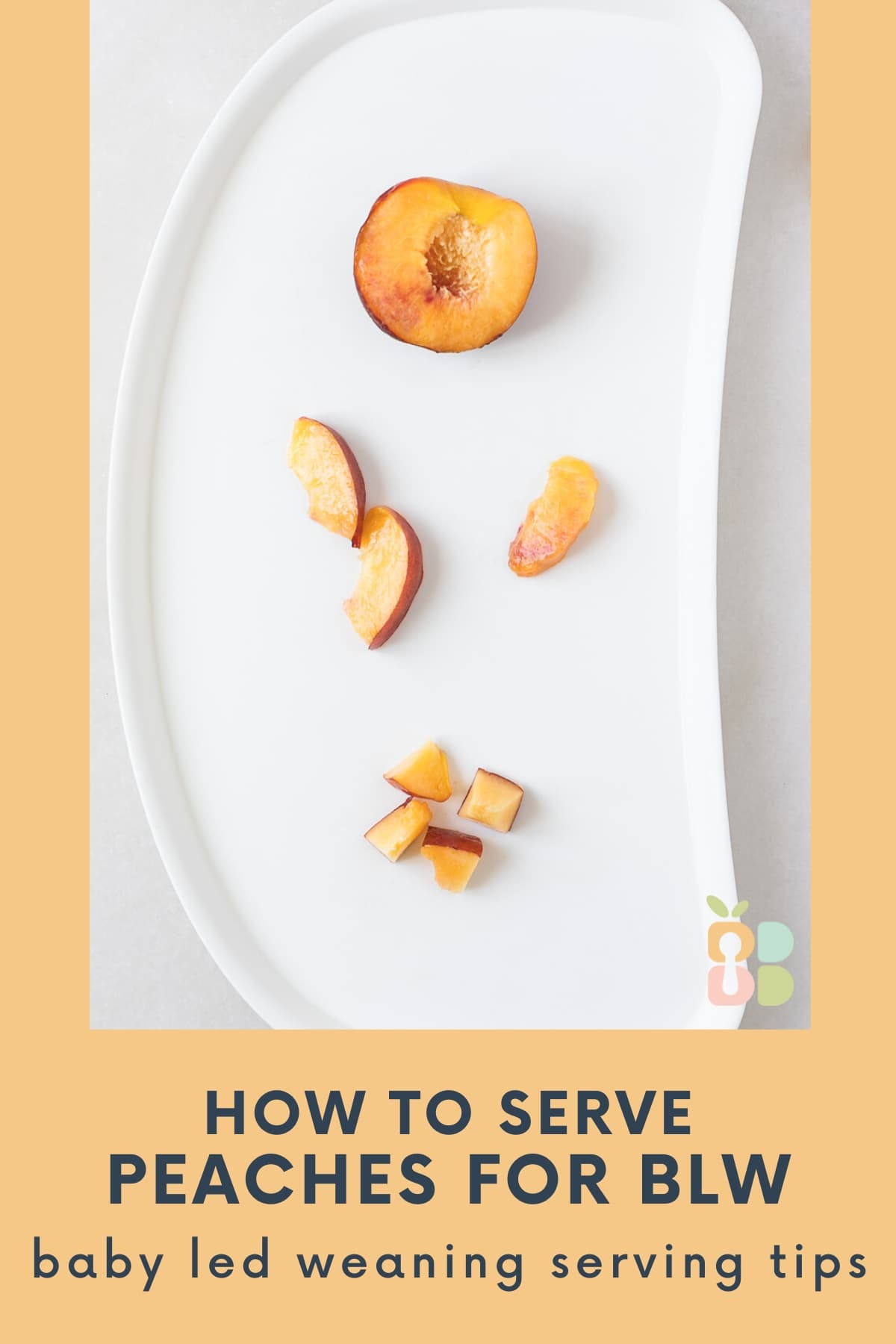
Summer fruit of all kinds is great for baby led weaning, because most of it is soft enough for baby when ripe without having to cook it. Peaches and nectarines are no different. When they're nice and ripe, they are super easy to serve to baby led weaning babies with very little prep work - and they taste delicious! Here's exactly how to cut peaches and nectarines for baby led weaning.
Jump to:
What Is The Difference Between Peaches and Nectarines?
Peaches and nectarines are very similar. In fact, they are genetically identical except for one gene that accounts for the difference in the texture of the skin. Peaches have fuzzy skin, while nectarines have smooth skin. Otherwise, both are stone fruit with a deliciously sweet taste and juicy, soft flesh that can be either yellow or white. So while I'll use peaches in this article, the same guidance is true for nectarines.

When Can Babies Eat Peaches?
Babies can have peaches as soon as they are developmentally ready for solids, around 6 months of age. Be sure that peaches are ripe enough before serving to baby. The flesh should be soft enough that it gives when you gently squeeze. (Try the smash test with a slice!) If the peach is too firm, it is not yet ripe enough.
Tip: Leave underripe peaches on the counter at room temperature until soft. To speed up the ripening process, place them in a paper bag at room temperature for a day or two.
Are Peaches Healthy For Babies?
Peaches are nutritious for babies, older children, and adults alike! Fresh peaches are a good source of:
- Vitamin C - Helps increase iron absorption
- Vitamin A - Good for eyesight and the immune system
- Antioxidants - Protects against oxidative stress
- Fiber - Good for digestion and gut health
Peaches also contain small amounts of other vitamins and minerals, including vitamin E, vitamin K, B vitamins, potassium, copper, manganese, and magnesium.
How to Serve Peaches for Baby Led Weaning

1. Halved, with pit removed (6+ months)
Make sure the peach or nectarine is nice and soft - it should feel juicy and give when squeezed. You'll also want to make sure the pit is removed since it can be a choking hazard. You can leave the skin on, since it will help baby grip the peaches, or you can remove the skin if you'd like.
Simply cut a soft, ripe peach in half vertically around the natural seam and give it a twist to halve. Remove the pit and give baby one half. He will be able to suck and scrape the soft flesh from the skin. If the peach is very large, you can cut it into quarters instead of halves. If the skin makes you nervous, feel free to remove it.
2. Slices, with or without skin (6+ months)
Cut a soft, ripe peach half into thin slices about ¼ inch thick. Leave the skin or remove it. Slices will be a little more difficult than a large half for baby to pick up, but they are still appropriate around 6 months. You can continue offering slices all the way through toddlerhood if you'd like!
3. Bite-sized pieces (9+ months)
Once baby has started to develop a pincer grasp, you may opt to cut peaches into small, bite-sized pieces, about the size of your fingernail. Let baby practice picking them up with his fingers, or offer a soft fork for utensil practice. If you prefer, you can skip this method and keep offering slices as baby grows, since a variety of shapes is good practice.
Tip: If peeled peaches are too slippery for baby to grip, roll the pieces in something to give the outside a little texture. Some good choices are hemp seeds, ground flaxseed, shredded coconut, or finely crushed walnuts.
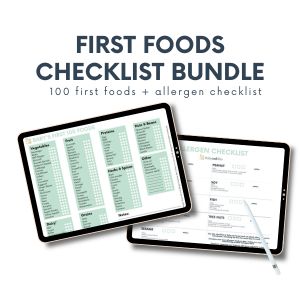
Track your baby's journey through starting solids! Get my 100 First Foods Checklist and Allergen Checklist Bundle today!
FAQ
Soft, ripe peaches are not a common choking hazard. However, if the peach is not yet ripe enough, it can be a choking hazard, as it will be firm and slippery. The pit is a choking hazard and should be removed before serving the peach to baby. Always be sure to test that you offer foods that are appropriate in texture and shape.
Peaches are not a common allergen, though some individuals with Oral Allergy Syndrome may have a reaction to peaches, especially if a reaction to other stone fruit or almonds is already present.
Peaches are a good source of water and fiber, insoluble fiber, which can help relieve constipation in babies. Peaches, pears and prunes are all particularly good at relieving or preventing baby constipation.
No, peaches that are ripe enough to be soft do not need to be cooked for babies using a baby led weaning approach or who are eating finger foods. If you happen to cook peaches for a family dish, though, baby can certainly enjoy them!
Some babies will be ready for a whole peach around 18-24 months. Make sure the peach is ripe enough to be soft, and show baby how to take a bite. Be sure to monitor and remove the seed when baby gets to it.
Canned peaches are often packed in a sugar syrup. Added sugars should be avoided for at least the first year of life (preferably 2 years). Opt for fresh or frozen (thawed) peaches if you can. If you are able to find peaches canned in water, those are appropriate for babies, as long as you follow the shape guidelines above.

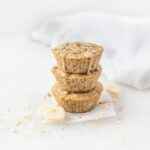
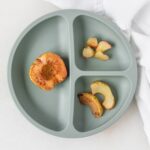
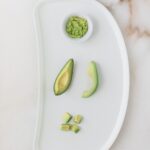
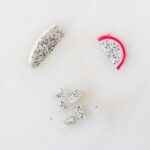

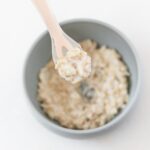



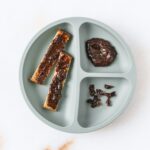
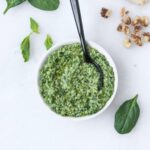
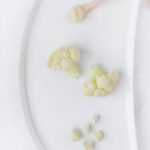
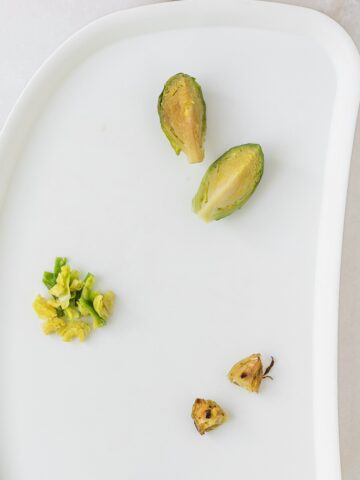
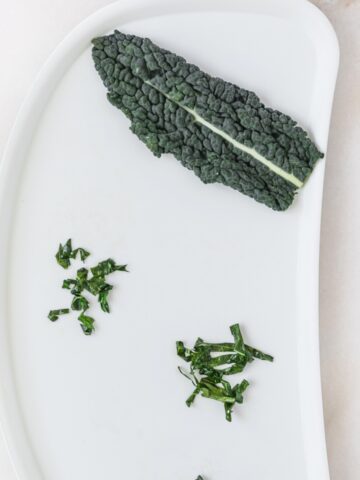
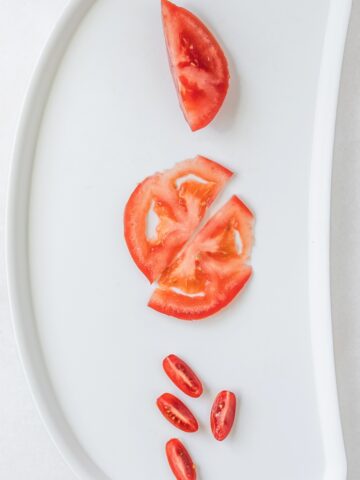
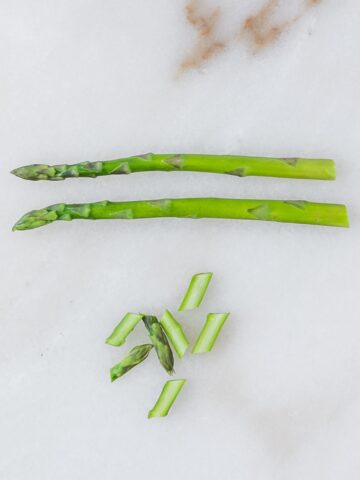
Leave a Reply